In this post you’ll find 3 different natural DIY scalp scrubs that will address different scalp needs.
Scalp scrubs are one of those things that sound like spa “hooey” and you think if there’s one step in your hair care routine you could skip, for sure that’d be it. But scalp scrubs can actually make a huge difference in the health and look of your hair.
I would actually argue that conditioners are the more unnecessary step in the whole thing. A good vinegar-water rinse does wonders and a little jojoba oil applied to the hair tips takes care of the rest.
But I digress – DIY scalp scrubs!
What exactly do scalp scrubs do?
Pretty much what it says in the name – they scrub the scalp, exfoliating it, treating it, boosting circulation and making way for new hair to grow, stronger and healthier.
Do you really need scalp scrubs?
Generally speaking, yes.
Just like a good regular facial exfoliant can do wonders for the condition of your skin, the same is true for your scalp. It’s just an extension of your skin tissue, in fact – it too produces sebum, sloughs off, regenerates, and can get clogged.
The products you use on your hair, unless you’re just applying them to the hair shaft, will affect the scalp and, most likely, leave some kind of residue. If you don’t clean that residue properly and regularly it will affect the health of the scalp and, consequently, of the hair.
Just like with the rest of the skin on your body, when you don’t have a buildup of dead skin cells or product residues sitting on top, the ingredients and treatments you apply to it will be more effective. They’ll penetrate better.
Now, if you’re on the “no-poo” method you might have less of a need – no product buildup for one. You will definitely have no need for it if you’re regularly using baking soda as part of your hair washing routine! Baking soda is very abrasive and it’s itself a popular scalp scrubbing ingredient.
Check out my earlier post about the different minimalist and DIY hair care possibilities, if you’re interested.
Related content: How to Make Water Only Hair Washing Work For You!
How often should you do a scalp scrub?
It depends on your choice of hair care products and hair care routine. It also depends on your hair type and the condition of your scalp in general.
If you don’t really use commercial hair products and your routine is already pretty natural and minimal, maybe once a month is more than enough.
If you like to use things like hairspray, gels or mousses to style your hair, or if your hair care routine includes standard commercial products, then you might benefit from a deep cleanse once a week. This would help prevent product buildup and alleviate follicle clogging and scalp dysregulation.
If you’re suffering from things like dandruff, flaking, itching, or seborrhea you could definitely benefit from weekly (gentle) DIY scalp scrubs scrubs as well.
How to apply scalp scrubs?
You can apply all these DIY scalp scrubs to a dry or damp scalp – it’s a matter of preference, really.
I usually prefer to apply them on dry scalp, just because I like to leave the scrub on for maybe 10 to 20 minutes and that’s much longer than I usually spend in the shower. But you don’t have to leave them on, of course.
The bulk of the effect will come from the actual scrubbing motions while you apply the treatment, so it’ll take a couple of minutes at best. Again, it’s a matter of preference. You can try both ways and see which one works best for you.
After that, you just wash your hair as you would normally – scalp scrubs are a “pre-wash”, if you will.
What DIY scalp scrubs should you use?
There are quite a few recipes out there for homemade scalp scrubs. They use a lot of the same ingredients with some variation. You have salt scrubs, sugar or honey scrubs, vinegar scrubs, baking soda scrubs, and even coffee scrubs.
Most will work in the same way, which is by sloughing off the dead skin through the motion of rubbing the granules against the scalp. Adding vinegar (acidic) or baking soda (alkaline), on the other hand, will do it by “chemically” helping to dissolve that dead skin and buildup as well.
Both types of DIY scalp scrubs are good and which one to choose will depend more on your regular hair care routine, your needs, and the state of your scalp.
- Salt based scrubs are very cleansing and disinfecting to the scalp.
- Sugar and honey based scrubs are more soothing, moisturizing, and gentle.
- Baking soda is very abrasive and too much on the alkaline side, so either use a very small amount or just avoid it all together.
- Vinegar, diluted in water, is both healing and disinfecting, besides also helping to balance the skin’s pH (good for dandruff, irritated, oily scalps).
Related content: A Simple DIY Spa Day Hair Care Routine You’ll Love!
3 SIMPLE DIY SCALP SCRUBS
All these recipes for DIY scalp scrubs make enough for one use.
1 – Basic scalp scrub (all scalp conditions & hair types)
- 1 Tablespoon fine sea salt
- 1 Tablespoon water
- 1 teaspoon cinnamon powder
- ½ teaspoon clove powder (skip if you have a sensitive scalp)
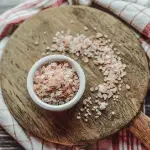
Salt is antimicrobial and has been used as a natural preservative for millennia. It’s also anti-inflammatory and very rich in trace minerals, if you get the unrefined kind. It’s an excellent base for any scalp scrub, since it’ll not only exfoliate the skin, it will also help clean and disinfect it.
Cinnamon is a wide range antifungal, antibacterial, and antimicrobial, so it’s very useful for any skin infections. It boosts circulation, increasing blood flow to the hair follicle and boosting hair growth. It also happens to smell absolutely delicious!
Clove is a VERY powerful antioxidant, antifungal and antimicrobial, so along with the salt it will help clean and treat any scalp issues you might be facing. It’s also an anesthetic and anti-inflammatory, so it will be useful in any irritated scalp conditions. It’s powerful stuff, so if you suffer from a sensitive scalp, it’s probably best to leave it out of your DIY scalp scrubs.
Related content: The Best Proven Ways To Reverse Gray Hair Naturally
2 – For dandruff / seborrhea / dry, flaky, or sensitive scalp
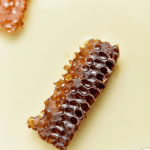
- 1 Tablespoon brown sugar
- ½ Tablespoon vinegar
- ½ Tablespoon water
- 1 heaped teaspoon raw honey
- ½ teaspoon clove powder (optional)
Whole brown sugar is naturally high in trace minerals and gentle enough to use on more sensitive skin as a scrub.
Honey (raw!) is naturally antibacterial and wound healing. It’s also anti-inflammatory, soothing, and moisturizing to the skin. Raw honey is naturally acidic, so it will help to balance the pH of the scalp as well.
All vinegars are antimicrobial and antifungal, so they will help to treat any scalp condition.
They’re also naturally acidic, so diluted in water they will help balance the scalp’s pH level as well. If you’re using apple cider vinegar, you’ll have the added benefit of the malic acid content, which is also a natural antioxidant and exfoliant.
Related content: The Best Natural Hair Loss Treatments (by Hair Loss Type!)
3 – For oily scalp / product buildup
- 1 Teaspoon green clay
- 1 Tablespoon fine sea salt
- ½ Tablespoon vinegar
- ½ Tablespoon water

Green clay has excellent absorption and adsorption capabilities. That means it will draw oils and dirt particles to it, cleansing the skin thoroughly. It’s also antibacterial and antimicrobial, helping to disinfect the scalp. It’s a great all-round ingredient to use in DIY scalp scrubs.
Related content: Hack Your Skin Care – a Bentonite Clay Mask 4 Ways!
Scalp scrubs are a great way to boost healthy hair growth. They help keep your hair “oomphed” and don’t really take up a lot of your time – which I always appreciate!
Check out my other post on the best and simplest minimalist DIY hair care routines, if you’re interested.
I hope you give one of these DIY scalp scrubs a try and let me know how you like them in the comments below!
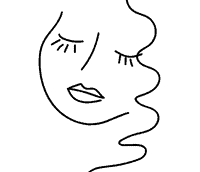
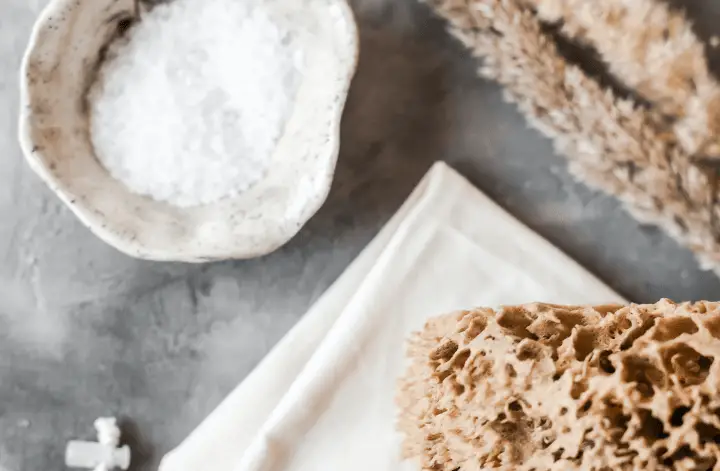
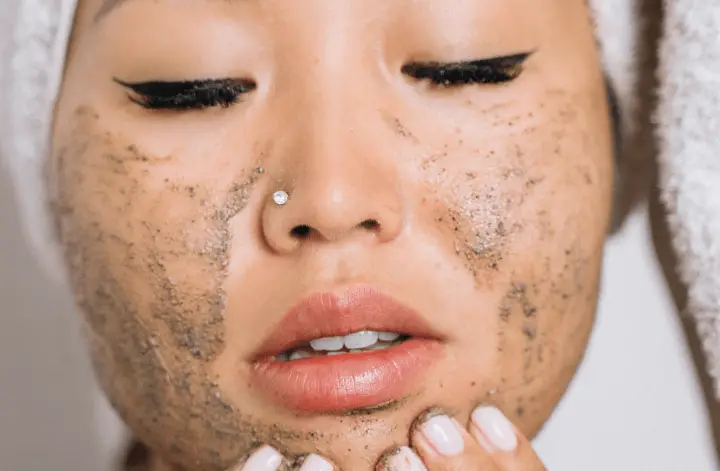
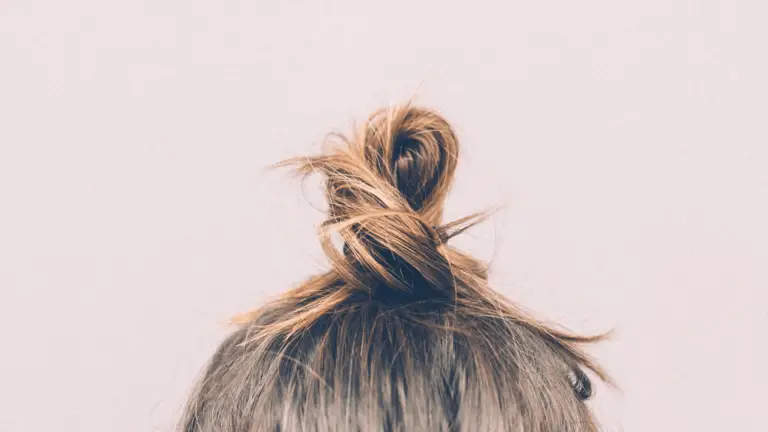



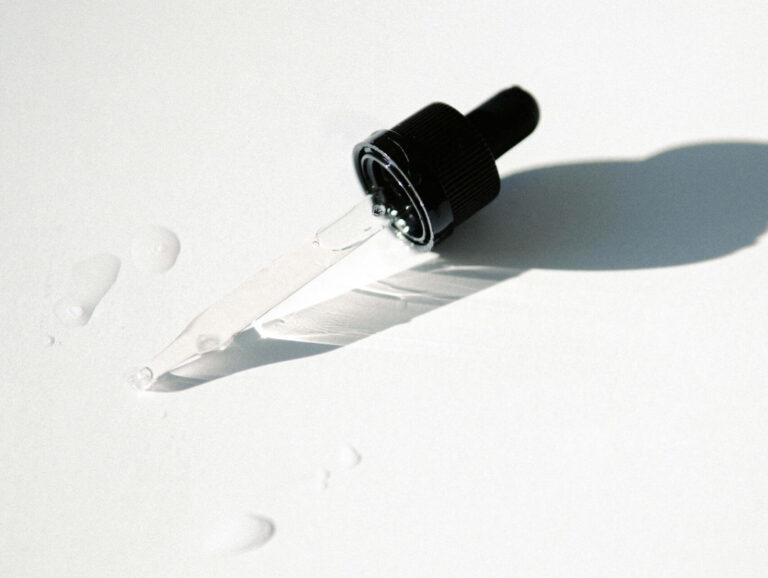

Love your blog so far! I’m four weeks in water only but I’ve done a few white rye flour mixed with soaked fenugreek water washes and it’s been good so far however this week started with my scalp acting up. Itchy and flaky so I’m going to try the salt scrub right now! My goal is water only, although throwing in the wash I mentioned is so nice for when I need the extra clean. Thanks for all the informative information.
Hi Serina! Thank you ^_^
Good on you – water only washing can be truly life changing. It certainly simplifies things a lot! But don’t worry if it takes a while to get your scalp used to it. Depending on how many products it’s used to, it can be an interesting ride that transition! If it’s not usual for you to get an itchy scalp, maybe take a look at the fenugreek water. Have you used it before? There’s always the possibility of individual sensitivity, or allergic reaction to a certain ingredient. I really recommend you do a final vinegar-water rinse (1 part vinegar + 7 parts water) every time you wash your hair, if you’re not already. It really helps to balance the pH, relieve itching, and treat the area. It’s a really good antimicrobial and antibacterial (and amazing for hair)!
What if one dyes your hair? Would vinegar change my hair color?
Hi Mary!
I’m afraid I can’t give you a definite answer on that. I haven’t dyed my hair, so I can’t speak from personal experience. It is possible that the acidity of the vinegar might interfere with the color pigments in your hair dye (there are so many kinds out there). Even if it’s not a matter of fading the color, it might change the shade a bit. Having said there are commercial hair masks and treatments with apple cider vinegar that purport to help maintain your color treated hair. The fact that vinegar diluted in water will be slightly acidic, and help reseal the hair cuticle and shaft, might help extend the color treatment apparently. So maybe it’s a matter of giving it a shot ^_^ If you do, let us know how it turned out!